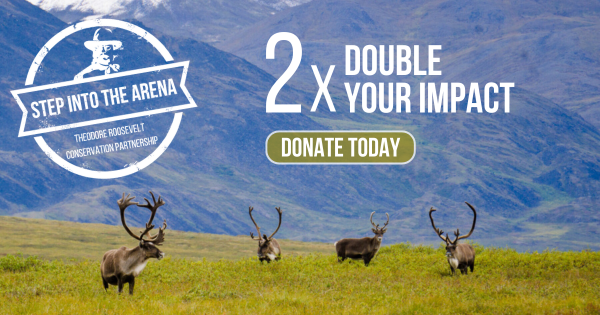After a significant legislative win last Congress, deer hunting organizations are adjusting their sights in 2023
In late December 2022, in recognition of the growing threat posed by the continued spread of chronic wasting disease among America’s deer herds, Congress took its biggest action yet in passing the CWD Research and Management Act.
The bill authorizes up to $70 million annually for state-level surveillance work and creates a first-of-its-kind funding stream for research into environmental spread, live-animal testing, improved testing sensitivity, and enhanced best practices. Now sportsmen and sportswomen are entering the next chapter in the effort to control CWD.
Here are the priorities.
Getting Authorized Funds Out the Door
Passage of the CWD Research and Management Act was a significant bipartisan victory cheered on by deer hunting groups and cervid industry associations alike. Now, this unlikely coalition needs to work together to ensure that Congress provides the authorized funding in the Fiscal Year 2024 federal budget.
Through the U.S. Department of Agriculture, Congress currently provides roughly $10 million annually to state and tribal agencies for CWD management. The funding is used for a range of services, including hunter outreach, partnership programs with meat processors and taxidermists, creation of disposal sites, and more.
Unfortunately, the funding falls far short of the growing need, and each deer season state agencies are forced to divert resources from other species and programs to carry out CWD suppression. A recent examination of 32 state fish & game agencies found that on average, states spend over half a million dollars each year, with some like Texas spending over $2 million.
Sportsmen and sportswomen will need to encourage House and Senate appropriators, as well as the White House, to fund the enacted legislation at the highest amount practicable in the coming year, grow the surveillance network on the landscape, and relieve some of the downward pressure felt by those tasked with managing the disease.
Influencing State Policies
As state legislative sessionscontinue around the country, hunters should remain aware of and willing to support or challenge proposed changes to CWD management in the state.
In recent years, for example, the Minnesota State Legislature has voted on moratoriums on new captive cervid facilities and increased testing requirements on cervid operations. State lawmakers also proposed transferring the management of captive deer from the state Board of Animal Health to the Department of Natural Resources, who manage wildlife in the state. While these changes weren’t enacted, they will likely be debated more in the coming years.
On the other hand, as recently as November of last year, CWD management zones were coming under arbitrary challenge, even after deer seasons had begun. In one such example in Mississippi, the state commission voted to remove a county from a management zone not long after a CWD-positive deer had turned up no more than a mile from the county line. This and other efforts to limit tagging requirements and expedite the transfer of deer continue to arise in states with influential captive industries.
For the latest info on CWD news in your state, check out www.cwd-info.org.
Enactment of Important Federal Efforts
Federally, deer hunters eagerly await completion of efforts mandated by recent legislation.
First, 2020’s America’s Conservation Enhancement Act authorized joint research between the USDA, U.S. Geological Survey, and National Academies of Science into predominant transmission pathways for the disease—this study must be done to inform next steps. The bill also authorized an interagency task force to implement the study’s recommendations and develop an interstate plan for CWD suppression. Ensuring that this work moves forward at pace is critical to addressing the worsening status quo and will be a focus of deer hunters in the coming years.
The more recently enacted CWD Research and Management Act also includes a directive for the USDA to evaluate improvements to the federal standards that accredit cervid operators as “low-risk” for CWD. While this will be a heavy task, the TRCP and National Deer Association found strong public support for additional oversight of the captive cervid industry in polling last fall. Overall, more than 90 percent of hunters and nonhunters supported greater certification standards at the USDA and stricter limitations on the movement of live deer.
Planning for the Future
The hunting community’s work doesn’t end there. Later this year, the TRCP will bring together several wild cervid organizations, as well as corporate partners with a direct stake in the future of deer hunting in North America to unify our respective efforts around a long-term strategy for CWD suppression. Our deer hunting organizations need to better define where we hope to be in our fight to suppress CWD in the years ahead, in terms of detections, state and federal management policies, funding, and hunter and non-hunter education. Fortunately, recent funding and policy successes have created a formidable and energized coalition of organizations ready for the task.





As mentioned above all states are not acting equally in prevention, research, and tracking efforts. Hopefully (with TRCPs help) the money will be distributed in greater proportion to states already enacting meaningful laws, policies, and regulations to research, prevent, and track CWD infestations. It would seem appropriate to the taxpayer’s dollar to ensure commissions are eliminating activities that are known to congregate ungulates unnaturally, i.e., deer feeders and to follow the biologists’ recommendations.
Good to see that happen, but like you said. Getting the funds out and about quickly might be difficult. I have never agreed with captive breeding of any wild animals for the sole purpose of resale, whether it is for meat or sale for other purposes. That includes the pet trade, we see how that has created huge environmental damages.
We already have a domestic animal husbandry industry that does a great job of providing food on the table safely. The specter of CWD is way too damaging to our wildlife and our hunting tradition to allow such
business models.